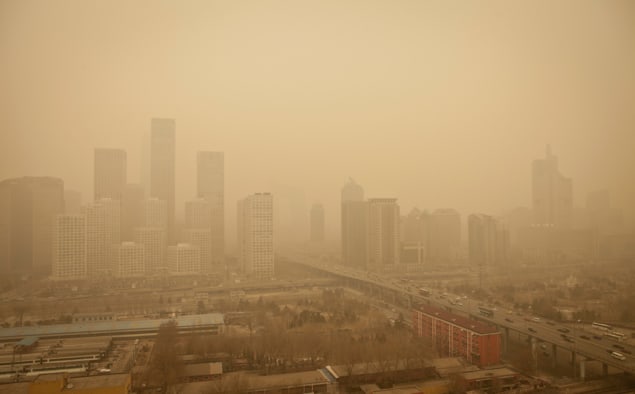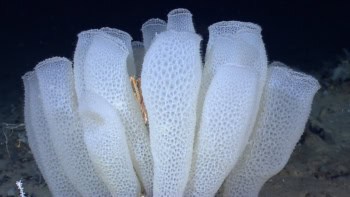
Interactions between aerosols and solar radiation can enhance temporary emission control measures, according to researchers in China and the US. Accounting for these interactions in the team’s simulations predicted greater decreases in ground-level concentrations of fine particulate matter.
Aerosol particles smaller than 2.5 μm (PM2.5) are linked to millions of premature deaths each year worldwide. In China’s Beijing-Tianjin-Hebei region, PM2.5 concentrations reach hazardous levels so often that the Chinese government restricts anthropogenic emissions during major events to ensure good air quality. Predicting the effectiveness of these measures is not simple, however. Weather conditions during the restriction period play a role, but feedback from aerosol-radiation interactions must also be considered to achieve reliable outcomes.
Where PM2.5 concentrations are high, the surface receives less shortwave radiation, decreasing temperature at ground level. This stabilizes the air column above, limiting atmospheric mixing and preventing particle dispersal.
What’s more, lower surface temperatures are typically accompanied by an increase in relative humidity, which enhances formation of secondary aerosols. Unlike primary aerosols, which are emitted directly, these particles form in the atmosphere after reactions between gaseous precursors. Sulphate, nitrate and ammonium aerosols, for example, result from oxidation of sulphur and nitrogen dioxide in the presence of ammonia. These reactions occur more quickly in humid conditions, amplifying the effect of the primary aerosol component.
To test the influence of this feedback on the effectiveness of temporary control measures, Mi Zhou of Peking University, Beijing, and colleagues at the Beijing-based Institute of Urban Meteorology, and at UCLA and Harvard University in the US, used the WRF-Chem model to simulate periods of 4-9 days with and without aerosol-radiation interactions and emissions controls.
“The inputs of the WRF-Chem model include static data, like topography and land use, dynamic data — temperature, winds and so on, and chemical species such as primary aerosols and secondary-aerosol precursors emitted in the modelling region,” explains Zhou. “It is a comprehensive numerical model attempting to illustrate the whole physical and chemical processes in the atmosphere.”
As expected, the simulations showed that emission controls improve air quality. More surprising was that, when aerosol-radiation interactions were included, the relationship between emission reduction and particulate matter was quadratic rather than linear. This is because restricting the output of primary aerosols and gaseous precursors of secondary aerosols suppresses aerosol-radiation interaction effects, interrupting the feedback cycle. The effect is especially pronounced at high aerosol concentrations.
“Our work demonstrates that implementing emission control measures will have larger-than-expected effects on reducing high PM2.5 pollution levels,” says Lin Zhang of Peking University. “This is very important for policy makers to accurately assess how effective the emission control measures are.”
The results could be relevant beyond the PM2.5 aerosols that Zhou, Zhang and colleagues focused on.
“[Aerosol-radiation interaction] effects on atmospheric stability and meteorology can also affect the accumulation and dispersion of other particulates and pollutants,” says Zhang. There are caveats, however. “Application to other pollutants needs caution since they might be influenced by different processes compared to aerosols,” adds Zhang. “For example, ozone, another critical air pollutant and a greenhouse gas, has very different chemistry processes in the air and can have a very different response to emission reductions. This is still an open question and is drawing increasing attention.”
The team reported the findings in Environmental Research Letters (ERL).


